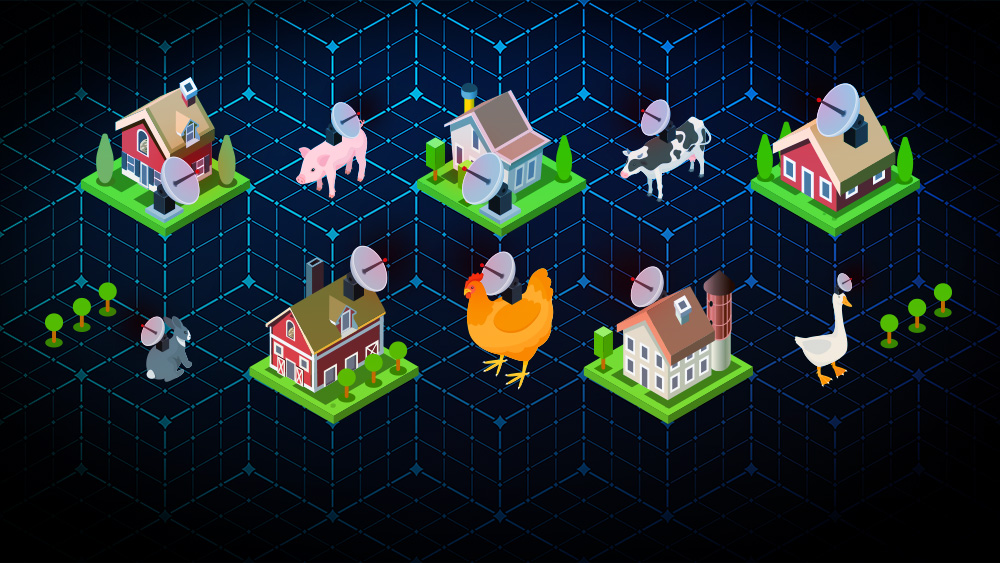
Aurich Lawson / Getty Images
5G in rural areas bridges a gap that 4G doesn’t, especially low- and mid-band
The mmWave revolution isn't here yet, but the other parts of 5G are more important.
by Jim SalterIn this third installment of our series explaining what we can expect from 5G, we're going to focus on how 5G deployment can impact rural and underserved areas.
A brief refresher: What is 5G?
If you didn't read the first article in the series, you might need a refresher on what 5G actually is—and is not. The term "5G" itself doesn't refer to any particular frequency range; it just specifies the communications protocol being used—like 2G, 3G, and 4G before it. You may sometimes also see the term 5G NR, which simply means "fifth generation, new radio"—the two terms are interchangeable. Fortunately, and unlike earlier generations, there are no competing standards—5G is just 5G.

Jim Salter
With that said, much of what you've heard about 5G likely does refer to specific frequencies that it can operate at. There are three general bands allocated for 5G, which are further subdivided and leased to individual carriers. Those are the low, mid, and high bands. The low and mid bands are 600MHz-900MHz and 2.5GHz-4.2GHz, respectively. These bands share similar radio characteristics with existing 4G LTE low and high bands; taken together, you may also hear the pair of them referred to as "sub-6GHz" or "5G FR1."
The most dramatic claims—and the most dour predictions—you've heard about 5G aren't actually about the protocol itself; they're about the third band it can operate on, known as mmWave (short for "millimeter wave"), or "5G FR2." Millimeter-wave spectrum runs from 28GHz to 52.6GHz and offers incredibly wide channels—up to 800MHz each—but it also has very different radio frequency characteristics than the sub-6GHz bands. Millimeter wave does not generally penetrate exterior walls, and it does not diffract around obstacles—but the "echoes" it produces when bounced from hard obstacles such as glass or concrete are usable, so you don't necessarily need a direct, clear line of sight to a nearby tower for mmWave to work.
That's enough information to understand the rest of what we're covering today, but if you're interested in further hairy details, you may want to skip back to the first article in the series; it goes into considerable additional detail.
Sub-6GHz and rural communities
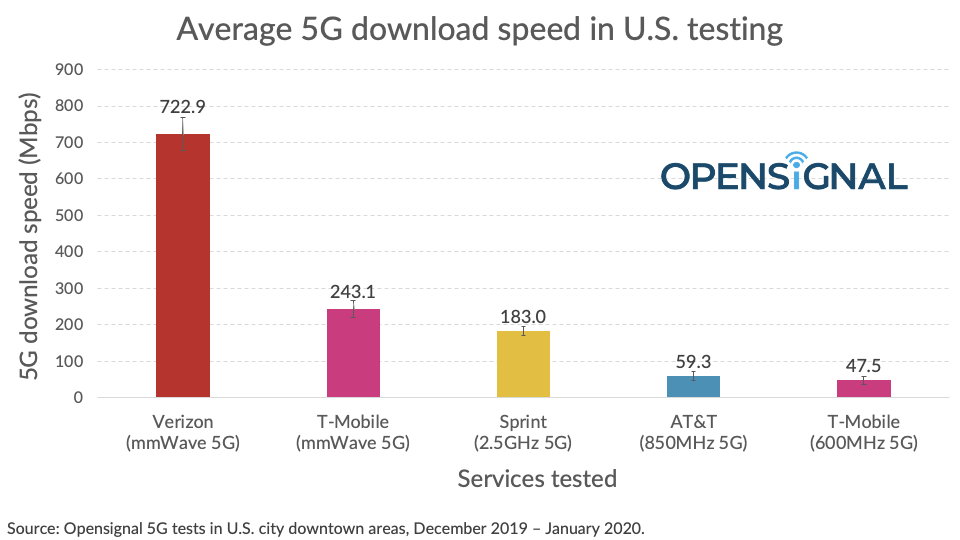
OpenSignal
We suspect that rural communities are unlikely to see mmWave deployments soon. While the extremely high throughput and low latency of mmWave is exciting, it comes with some steep disadvantages for rural areas—it's considerably shorter range than sub-6GHz bands, and it has much more difficulty penetrating things, including but not limited to wooded areas.
The biggest obstacle to deploying mmWave in rural communities comes down to the same reason that those communities are underserved in the first place—their lower population densities and wider territories makes them less immediately profitable to invest in. We suspect that for the next several years, 5G deployments to rural communities will look largely like the 4G deployments that preceded them—mostly in the very long-range low band, under 1GHz.
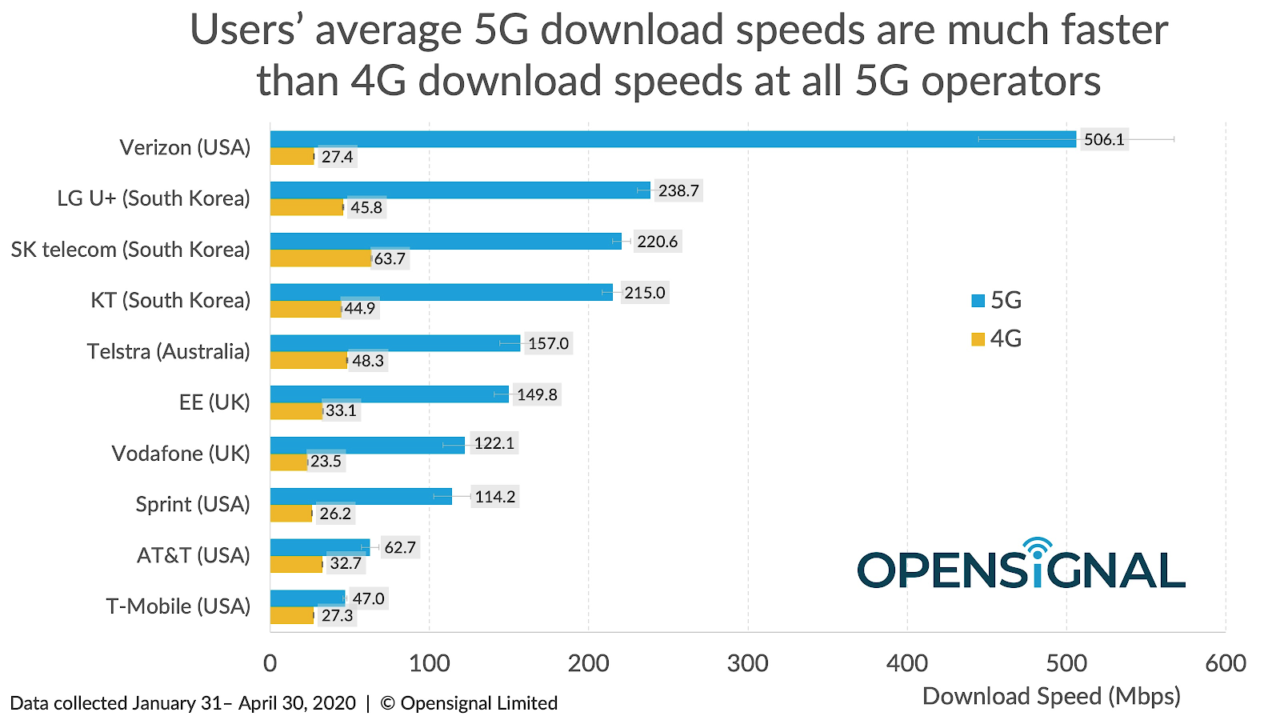
OpenSignal
That doesn't mean that those communities won't see improvements, however. Although the difference between 4G and 5G in the low and mid bands isn't as eye-watering as the difference between sub-6GHz and mmWave, it's still pretty substantial. OpenSignal tested average US 5G download speeds from Verizon, T-Mobile, Sprint, and AT&T on each of the three bands. AT&T's 59.3Mbps and T-Mobile's 47.5Mbps low-band download speeds may not set your hair on fire, but they're substantially better than the speeds that 4G on similar bands provides now.
These 5G low-band improvements are especially attractive in device-dense environments. You might think that wouldn't apply to rural communities—after all, the whole problem is that they don't have enough people to interest communication companies in investing in them. However, those communities tend to be serviced by relatively few towers and largely with narrow, low-band channels. There's less airtime to go around on those low-band channels, and many rural areas have seen service sharply drop since quarantine efforts began, with more people staying home and competing for airtime on the same long-range, low-bandwidth frequencies.
These areas are likely to see two major benefits from the 5G rollout—the higher efficiency due to tighter timing makes more airtime available on both low and mid bands, and the need to refresh equipment at the towers to support 5G makes it more likely that the growing "downtown" areas of these small communities will at least see some low-band towers augmented with new mid-band equipment. The mid-band doesn't reach as far as the low band does—but it offers several times more bandwidth per channel, meaning each mid-band tower is capable of serving more users with higher speeds than low-band only towers can.
In many rural households, these improvements don't just extend to phones and tablets—household Internet access via cellular broadband is increasingly common. This trend is likely to pick up further as 5G deployments increase the speed and quality of cellular Internet connections. We expect to see a broad array of devices such as Netgear's upcoming MR5200 sub-6GHz 5G modem make it easy to deliver whole-house Wi-Fi bridged to a 5G Internet connection.
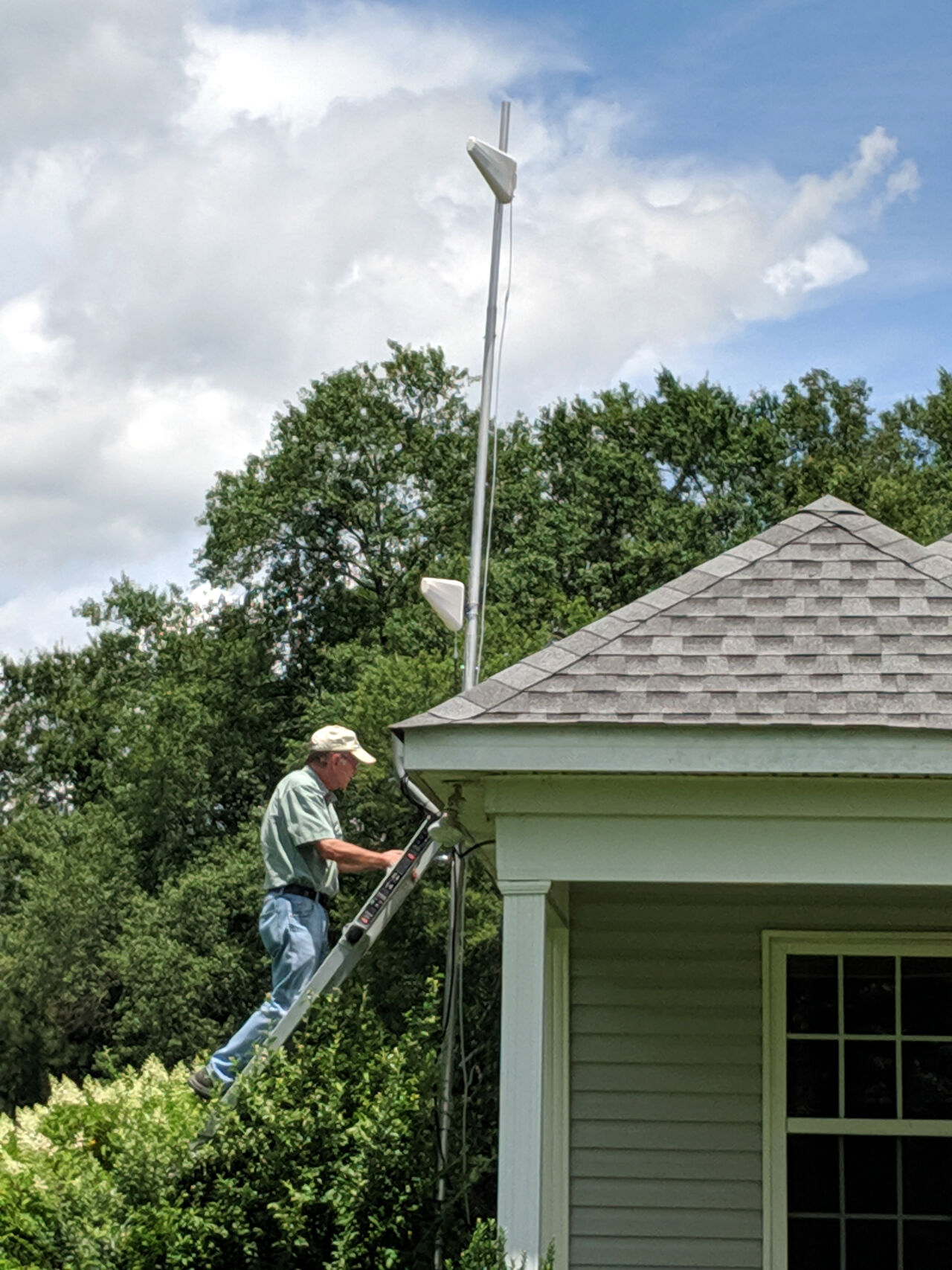
Jim Salter
Millimeter wave and the great outdoors
There are some great possibilities for mmWave in rural areas, but we don't expect to see them in the real world anytime soon. Due to mmWave's relatively short range and extremely low penetration, it's unlikely to be useful in rural environments in anything but site-to-site deployments—meaning a tower raised above the local tree line, aimed directionally at the nearest mmWave base station.
This sort of fixed-antenna point-to-point connection is certainly possible—my own parents already use a similar setup to make 4G mid-band coverage at their house possible. And the distance at which mmWave connections are possible increases dramatically with fixed, directional antennas—earlier this year, Qualcomm and Ericsson demonstrated a working mmWave connection between a base station and a 5G modem with directional antenna 2.3mi (3.8km) apart.
Although it's technically feasible to service houses for miles around from a mmWave-capable tower, we suspect incumbent telcos generally will not be willing to gamble on the investment, especially at first. It's less expensive to put up one tower than to run many linear miles of fiber, but most telcos will probably see the technical difficulty of installation on customer premises as too high a bar—both for their own technicians and for their customers, too.
Outdoors doesn’t always mean rural
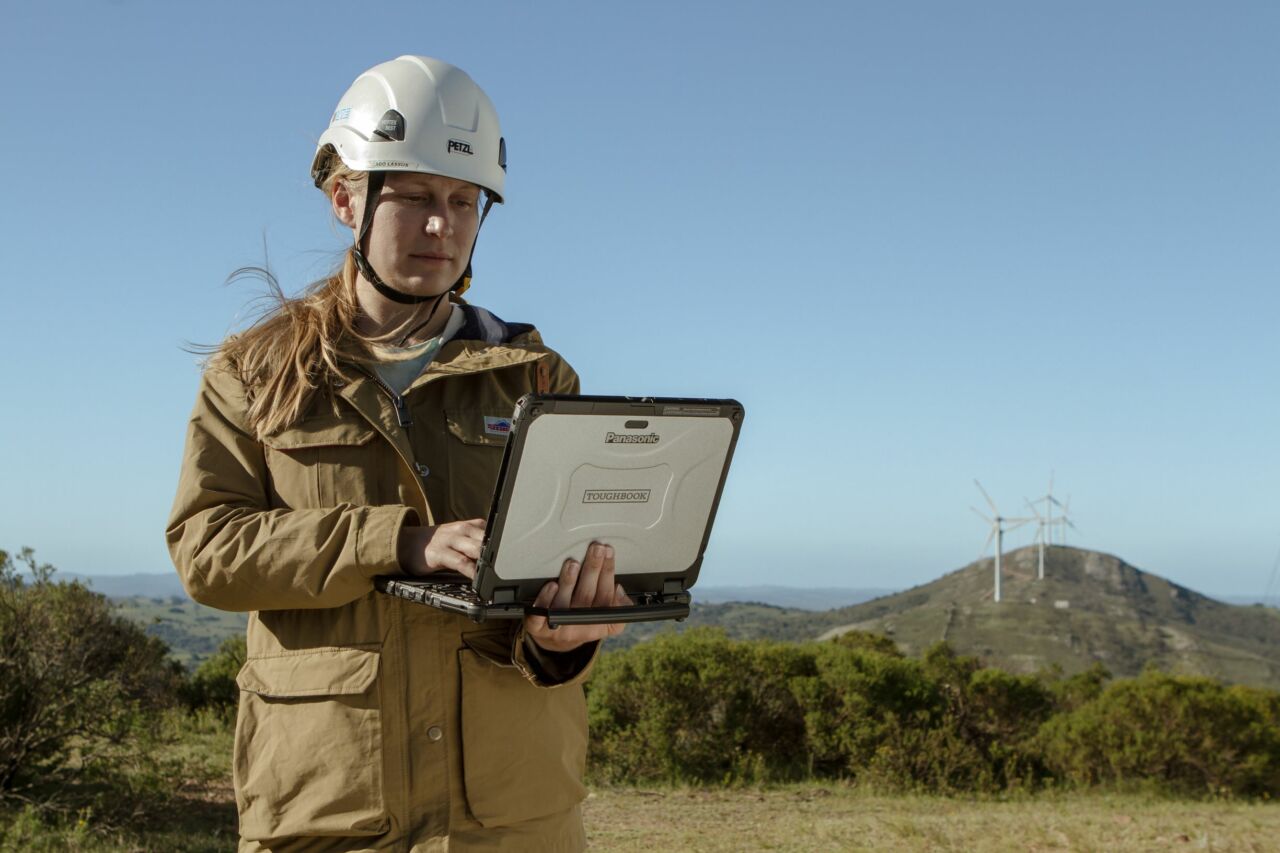
Panasonic
When we spoke to Panasonic Senior Executive of Wireless Communications Business Development Michael Pozapalidis, he pointed out another easily missed angle for mmWave connections. Panasonic builds a lot of ruggedized PC laptops and Android mobile devices with built-in cellular modems, ruggedized to stand up to daily conditions "in the field" like those experienced by construction and utility workers.
In outlying rural areas, those field-service devices will likely be limited to the same sub-6GHz bands that we've already discussed. But in more urban environments, the mmWave-capable modems Pozapalidis tells us Panasonic will be employing in near-future Toughbook devices can offer much higher-quality connections, in turn enabling richer support and service applications to those utility and other service workers.
Conclusions
For rural communities, as for businesses, the impact of the 5G rollout—especially for the first few years—will look much like the impact of the 4G rollout did about 10 years ago. The multiple-gigabit, ultralow-latency promise of mmWave 5G won't arrive any time soon—and it may not arrive at all, until those communities have already grown enough to not be so rural anymore.
But sub-6GHz 5G will be a lot quicker to arrive and much more immediately useful. Since 5G low and mid bands occupy the same area of the RF spectrum as the existing 4G low and high bands, they're simple, immediately useful drop-in replacements—and they'll offer higher throughput, lower latency, and more predictable service quality than the 4G systems they replace. These improvements will be enabled by better timing, centralized control, and quality-of-service routines built into the newer protocol.
Although it's not quite ready for prime time yet, DSS—Dynamic Spectrum Sharing—should also help smooth the transition from 4G to 5G. Carriers who deploy DSS technology will be able to service 4G and 5G phones on the same spectrum simultaneously. This allows a more gradual priority shift from older devices to newer ones, without unnecessarily starving either for bandwidth.
All this to say that the presence or absence of 5G in your next device probably won't make much of a difference—but it's already a "nice to have" feature. Depending on where you live and what your requirements are, it might end up shifting from "nice to have" to "gotta have" at some point in the next several years. Keep your eye on Ars, and we'll let you know when we get there.